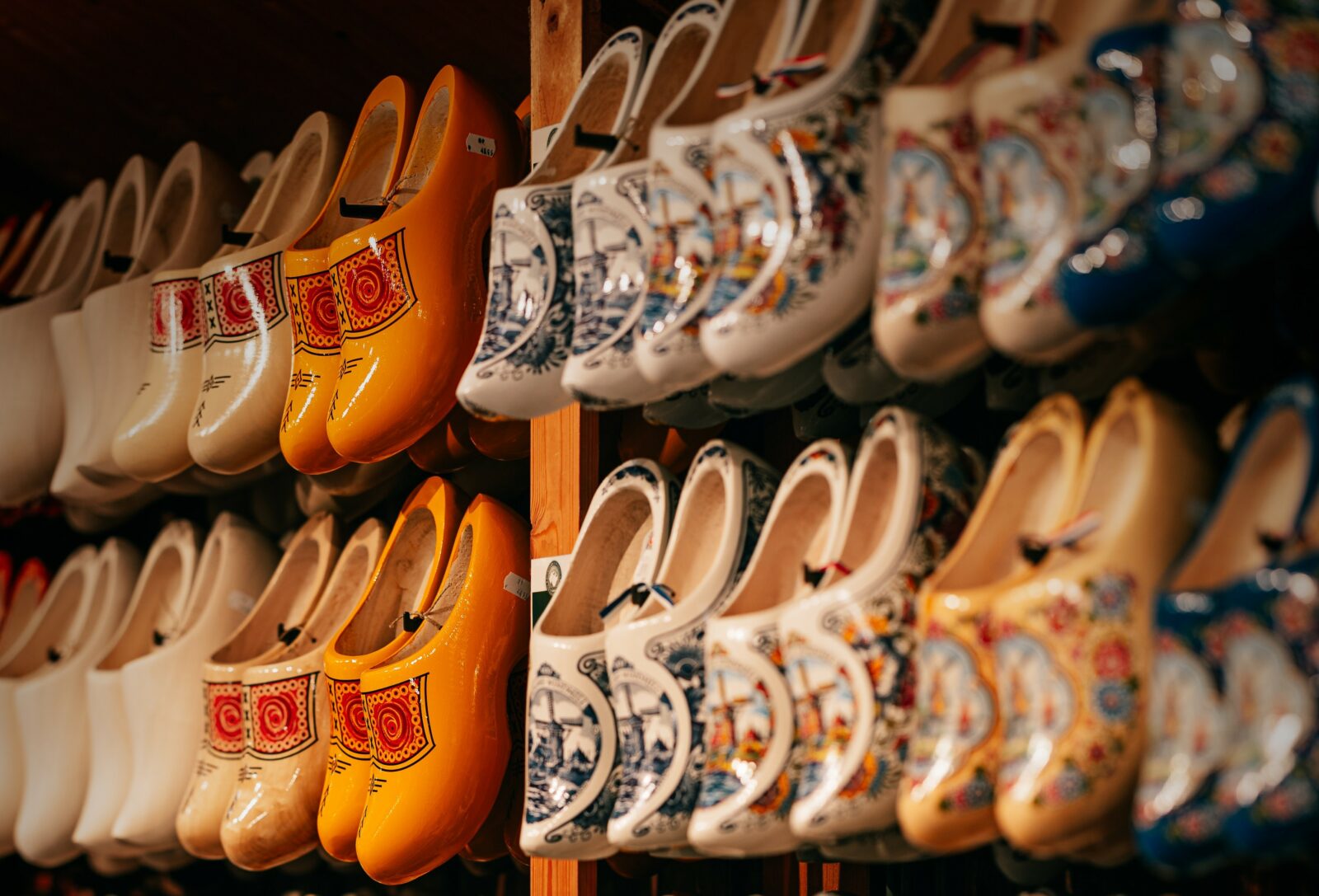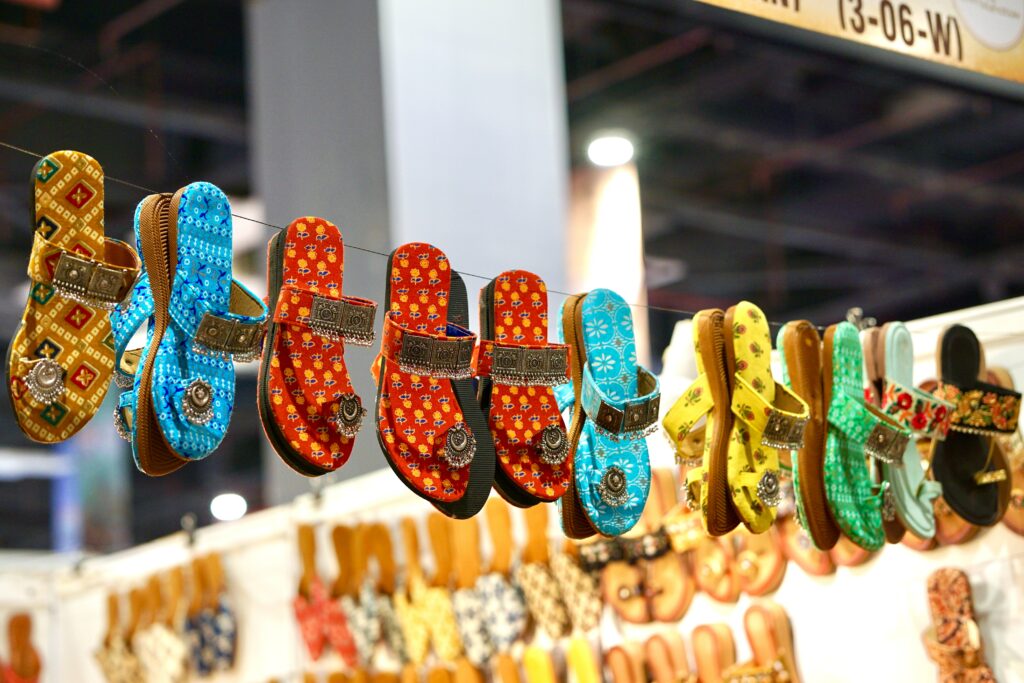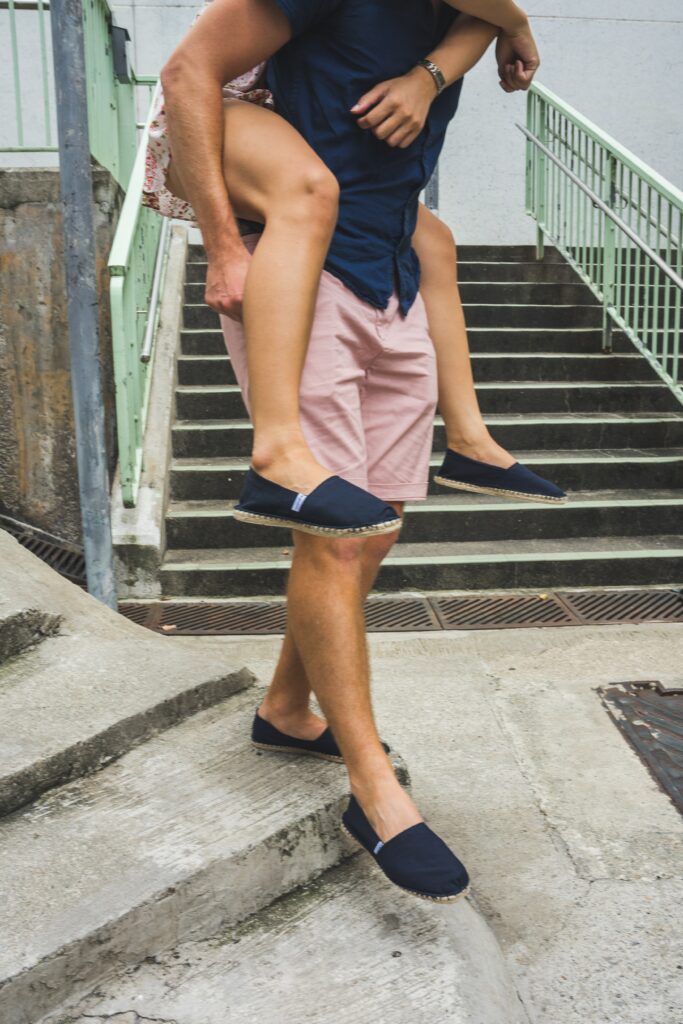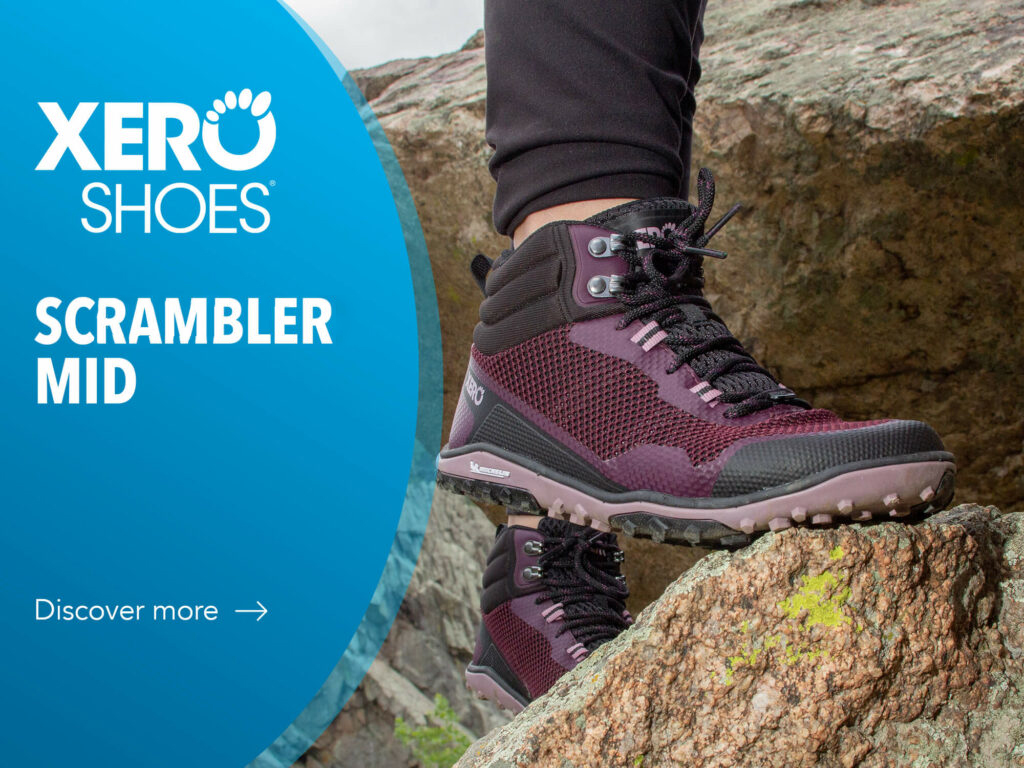When in Rome, do as the Romans do.
The differences between different countries around the world are expressed in so many ways, including language, cuisine, clothing, and, consequently, also through footwear. If in human history we have had the opportunity to admire many different models depending on the different needs of the land, climate and use, today with globalization we can find a generally homogeneous market all over the world.
Footwear has become a fundamental element of outfits that day in and day out speak about us, our character and our way of being, thus our personality. But while there are countries with people who tend to focus only on cutting-edge footwear, there are others who traditionally still preserve the footwear of bygone eras, which are now considered iconic accessories that preserve the cultural memory of their nation.
Western shoes
Television, social media, movies and TV series confirm it: America, in recent years, is the most influential country when it comes to fashion, be it related to clothing or footwear.
This is also demonstrated by the Nike brand, whose explosion started on American soil and then spread to the rest of the world. The U.S. brand has been on the crest of a wave for more than a decade, especially in sports footwear, dominating this market with a slice that exceeds 90 % of sales. It could be said that sneakers are the quintessential American footwear and, by extension, also those that characterize the entire West.
Shoes of the rest of the world
But are there really no other iconic shoes that talk about us across the world?
Actually, yes. It’s just that not all countries have distinguished themselves on shoe production or have set aside tradition in the past centuries, losing a part of their culture.
With this article, we want to take you to different countries around the world to learn about their typical shoes and the history from which they descend.
Are you ready to go?
Geta and Okobo: the tradition of the Rising Sun
The first stop takes us to Japan!
A country that has made elegance and aesthetics one of its greatest peculiarities cannot but give the world two shoes that are as particular as they are distinct. You have probably already heard of them, as both have entered the common imagination thanks to Japanese movies and the immense production of anime filled with characters in more traditional clothes.
We are talking about the geta and the okobo.
The term ‘Geta’ is used to describe the typical Japanese footwear, as well as the oldest in the Rising Sun, which we can still see today during matsuri, i.e. the various traditional festivals that take place during the summer season.
It is composed of a wooden board, which serves as the sole, to which other dowels, called ‘teeth’, are attached perpendicularly, lifting it off the ground. Normally there are two, which guarantee comfort and balance, but there are other versions that can have either a single tooth or three, if not more. Finally, they have a fabric strap that, positioned similarly to current flip-flops, divides the big toe from the other toes and allows them to be worn comfortably.
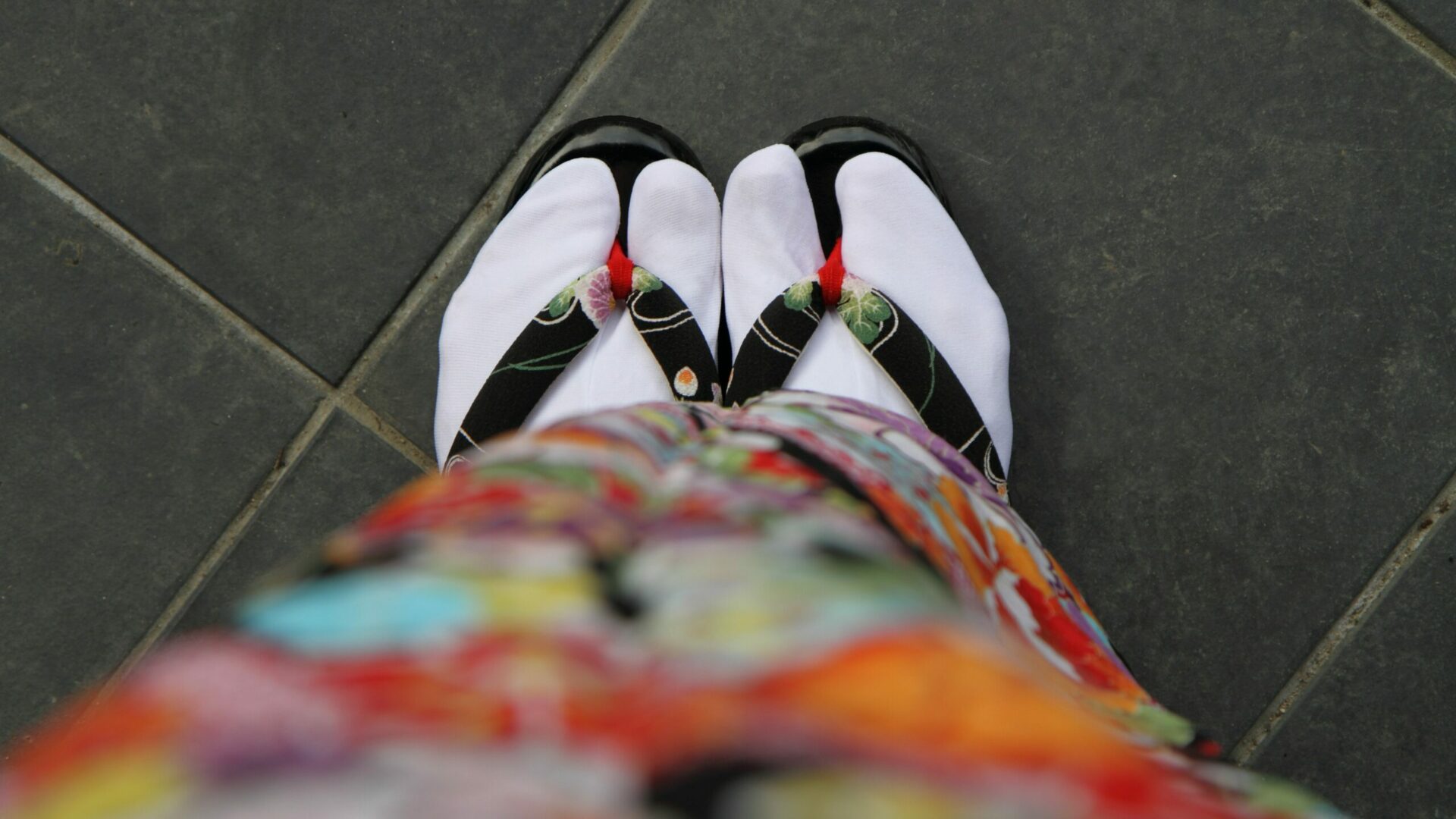
Photo credit: Vanessa Tay Unsplash
Getas are a true symbol of Japanese perseverance which, despite globalisation and the post-World War II economic boom, does not want to abandon its iconic symbols. A faithful companion of the yukata, the simplest cotton summer kimono, getas arouse nostalgia in older people because of their noise, called karankoron, that they make when they hit the ground. A mostly forgotten melody that sings to us of a country still rich in mystery and charm.
Not dissimilar, but decidedly more elegant and formal, are the Okobo, which became famous at the feet of the maiko, the geisha apprentices. They differ from simple getas in that they are not equipped with teeth, but with a single heel made of willow or paulonia wood about fifteen centimetres high and hollowed out at the front.
In the heyday of teahouse culture, okobos were true fashion references of the time: these shoes were lacquered and decorated with designs, becoming genuine works of art. Being formal shoes, they are still worn today with tabi, white socks that entirely cover the foot, and with fine kimonos.
A walk through the land of Tulips with the Klompen
Let’s fly to Europe, to one of the most popular tourist destinations on the Old Continent: the Netherlands. Famous certainly for its endless fields of tulips of all colors, but also for iconic shoes often purchased in the form of key rings.
How many of you have a Klompen hanging from your house keys or have given a miniature version as a gift after a trip to the Netherlands?
Originally working shoes made of poplar or willow wood, wooden clogs are today the most representative symbol of the Netherlands. It is common, in fact, to find them in every souvenir shop stall in many variations, both wearable and as simple gadgets to give to friends and relatives.
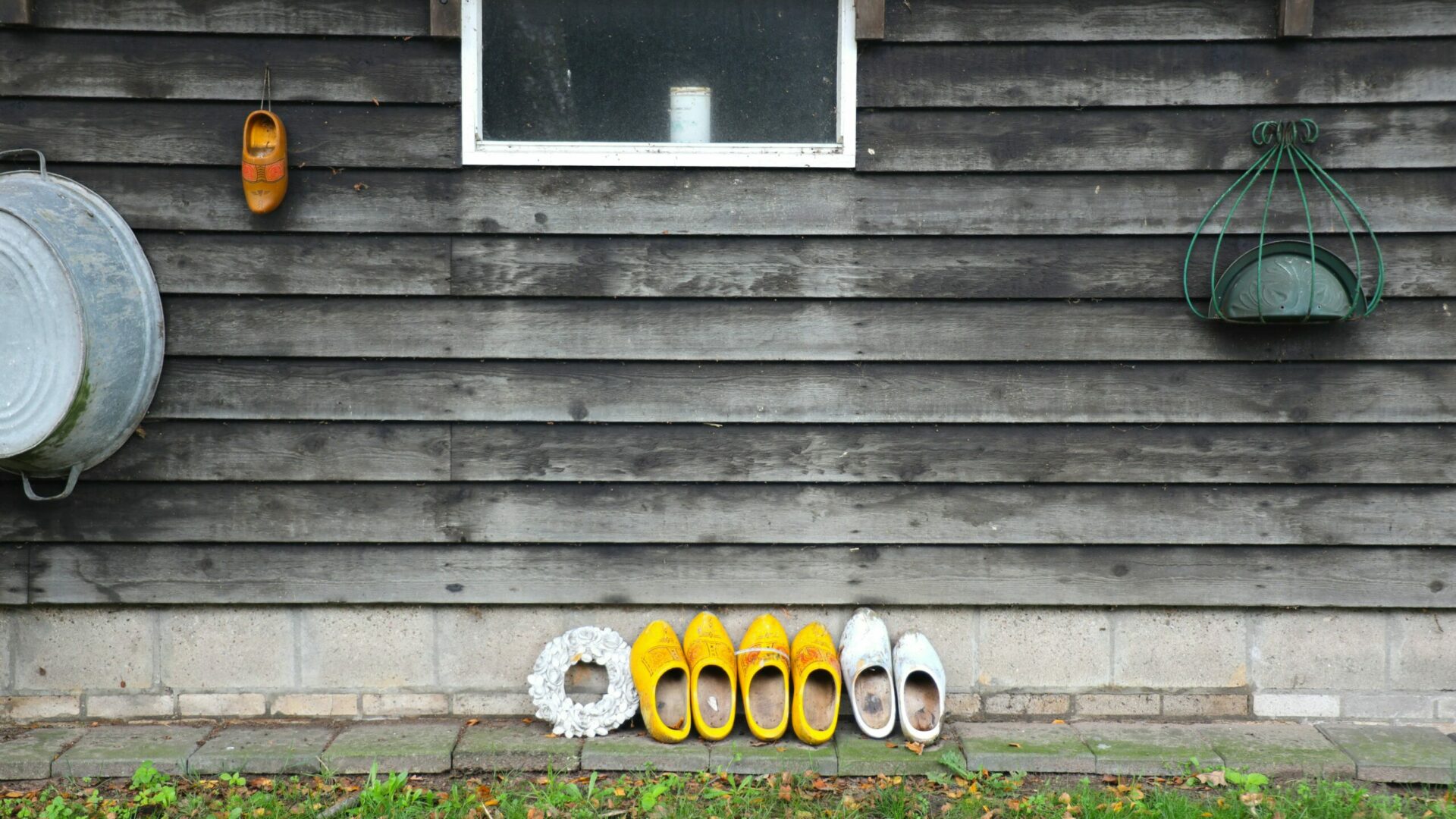
Photo credit: Megumi Nachev by Unsplash
First discovered around Amsterdam and dated around 1200, Klompen originated in ancient times to enable farmers to work in the fields. The Netherlands is notoriously a very muddy land and difficult to cultivate. Wooden clogs were very useful in this regard because they helped to avoid slipping or sinking into the earth.
Moreover, as wood is an insulating material, they protected the foot from the cold and dampness, keeping it dry and sheltered throughout the work. In winter, to cope with the colder temperatures, farmers used to stuff their clogs with straw or paper.
It was a truly functional footwear, suitable for all seasons.
They became so popular for working in the fields that over the centuries they also began to be considered ‘casual’, so much so that clogs began to be produced for weddings, ice skating and many other mundane occasions. Until today, where they are both a top product for tourists passing through Holland and a strong symbol of the tradition of those who were born there. And still want to take a piece of their own history with them.
How to step into a fairy tale with Moroccan Babouches:
Those who grew up with Disney films, imagining themselves stepping into one of their fantastic and colorful worlds, will not be unfamiliar with this footwear that brings to mind the ‘Arabian nights‘ and the magical atmospheres it evokes.
We cross the Mediterranean Sea to land in Morocco where we make the acquaintance of the Babouches Marocaines. These babouches become a must-have for footwear lovers thanks to their particular aesthetic: they are characterised by a tapered toe, an open back, but above all by the bright colors that form the backdrop to the intricate and elegant embroidery.
In ancient times, the production of these slippers started with the processing of the leather: from cleaning and drying to dyeing the desired color. This process made the slipper very light and comfortable to wear. After several centuries in which this technique has been refined, it is now possible to find slippers produced in a more sustainable way, from organic materials and dyed with vegetable-based colors.
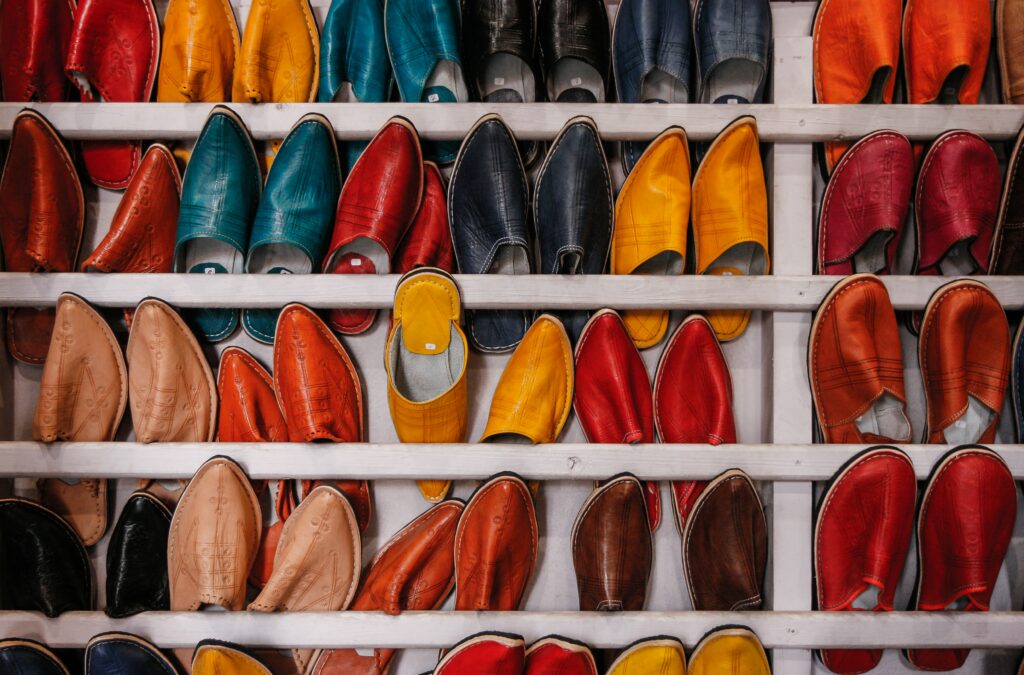
Photo credit Martin Adams by Unsplash
As we have already seen with the Dutch Klompen, Babouches Marocaines are also an excellent souvenir to take to friends and relatives after a trip abroad. In addition to being a beautiful object of Moroccan tradition, they are very reasonably priced, and it is possible to find endless versions for every friend or relative. In fact, it is not uncommon for each pair of Moroccan shoes to feature a different motif that matches the chosen color, or additional decorations such as sequins, tassels, and small jewelry. A true personalized gift for all tastes!
Discovering Indian traditions: sandals
Now, let us fly to India, a vast country with many traditions. We are all familiar with the beautiful, colorful, richly woven dresses that accompany traditional belly dancing or religious ceremonies. And it is precisely in the country’s sacred traditions that we draw on to talk about the footwear that sets it apart. India, as we all know, is a country with a climate that tends to be very hot and for this reason, most of the population, except for the northern area that includes a stretch of the Himalayan mountain range, has always lived barefoot.
The foot, in Indian culture, is a very important part of one’s body, which is cared for with tools specially designed and built for the purpose and adorned just like the hands, with ritual designs, rings and other jewellery.
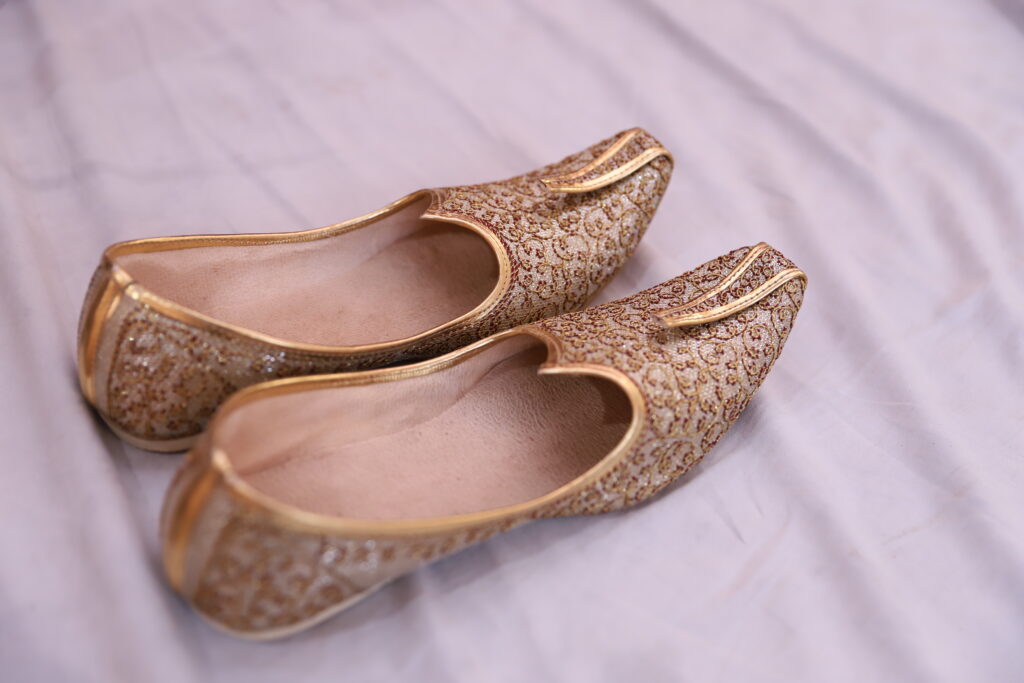
Photo credit:
Shoes, in fact, were only introduced in religious ceremonies, the tradition of which varies according to the region of origin. This is why we have so many shoes in such a vast country, in which we can identify four different common models: paduka, chappal, jutti and mojari.
Paduka are the oldest sandals in Indian tradition. Formerly adorned with Buddhist, Hindu and Jain saints, they were a means of distinguishing different castes: the more elaborate and made of precious materials, such as silver and ivory, the more important a person was within the society.
There are also wooden versions, which are much more traditional, with a grip given by the trunk between the big toe and the other toes. Over time, the models have evolved more and more, changing the colors and basic design, while maintaining the open figure that makes them comfortable to wear throughout the day. Their name can be translated as ‘Gods’ footprints‘.
The Kolhapuri Chappal are the best-known handmade slippers abroad because of their leather work. The tanned material makes it a very durable shoe.
There is also a variant from further north, the Pola Chappal, made by weaving shale grass, used for walking in the snow and taking part in religious ceremonies. They are distinguished by their cloth lining and colored embroidery on the upper, but above all by their closed toe, which protects the foot from the outside. These shoes are typical of the mountainous area of Himachal Pradesh.
From the more temperate zones we have the Jutti, which have left their mark all over the world. They belong to the richest era of Indian history, as they were used by the country’s royalty and thus went down in history. Traditionally, these shoes were made of leather by several craftsmen: their intricate workmanship involved the incorporation of precious stones, such as gems and pearls, within a rich texture of embroidery in Zari threads of pure gold and silver. A true work of art at the feet of the most powerful people in all India.
Finally, we have the Mojari Khussa, the footwear that distinguished the most powerful people in society, such as maharajas, nawabs and zamindars. They too were made of gold and silver threads with the addition of precious stones. There is no distinction between the right and left shoe, but being entirely handmade, they are still extremely comfortable shoes.
Hunting on the ice of the Far North with Kamik Eskimos
Back further north and into a much colder land to meet the last shoe on our journey: Kamik. Now extremely famous for their unmistakable design and unparalleled resistance to the coldest temperatures, they were initially used by the Inuit population, the only ones to live in the frozen expanses of Greenland and the North American continent. Today, however, they are also a precious and characteristic item to buy when returning from a trip.
Exactly like all traditional Eskimo clothing, the boots are also handmade by the women of the tribe, custom-made for the person who is going to wear them. There are two different types depending on the source material: caribou skin or seal skin, which are also the two main sources of food in those lands. The skins are sewn together to create harmonious contrasts and adorned with designs that symbolise the status, skills and gender of the person who will wear them: women’s boots have horizontal patterns, while men’s are vertical.
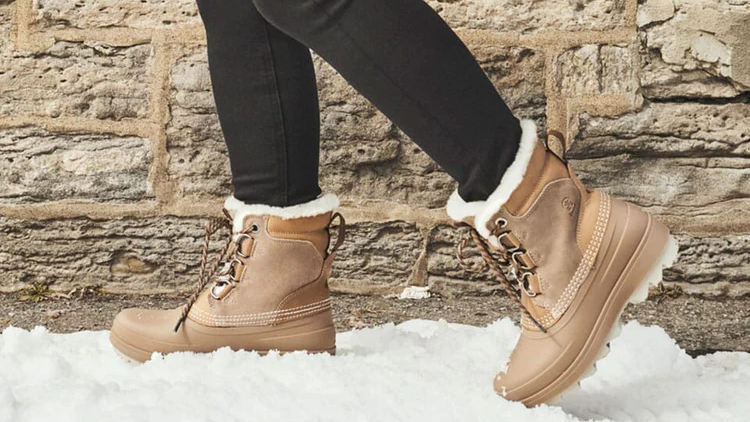
Photo credit: Kamit website
Another interesting curiosity lies in the number of layers that make up the kamik. In addition to the boot itself, which reaches mid-calf, there are several layers of fabric underneath which serve to warm the foot more and insulate it from the outside. It starts with an inner slipper, directly in contact with the foot. It is then topped by a protective sock or lining. The number varies depending on the season and temperature. Then we have the boot as such and finally an overshoe which is placed over the boot and bears the geometric or floral motifs we have already mentioned.
But that’s not the end of it, of course!
The shoes we can find in different countries around the world are as endless as the cultures that inhabit it. We have already seen the Friulane, typical footwear from northern Italy, and we all know the famous Espadrilles from Catalonia. There are also several shoes that have become world-famous by linking themselves to a sport, such as the tango shoes native to Argentina. Some of these shoes have indeed become famous, crossing the borders of their own countries, but many others are still waiting to be discovered.
Where will the next journey of discovery of new characteristic shoes take us?
You may also be interested in the following articles:
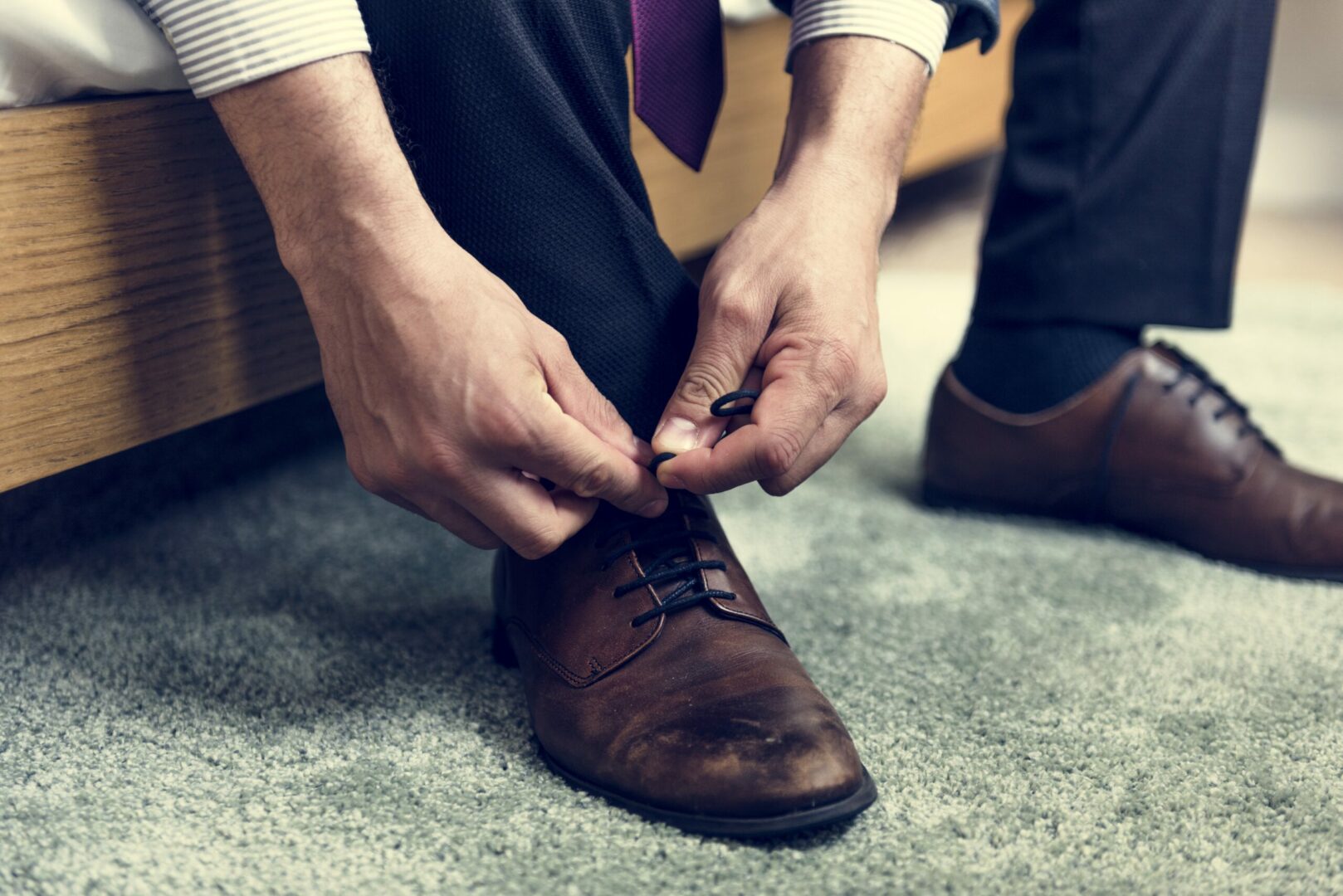
Laces, when tying your shoes is not as simple as it seems
We might take this fundamental component of footwear for granted. A lace, after all, is just a string to tie. In reality there is a lot of research and work involved in making the right string for aesthetics and function.

How many ways can you lace a shoe? (part 1)
Let’s talk about how to get the perfect fit with shoe fasteners other than the classic string. Magnets, Velcro, casters and zippers, and other very innovative systems.

What shoes to pack?
They must be comfortable but also eye-catching, ready to look good in any situation, protect the foot in any climate and be worn for days on end. Not an easy choice that of shoes for travel. Let’s see what criteria to consider.
























